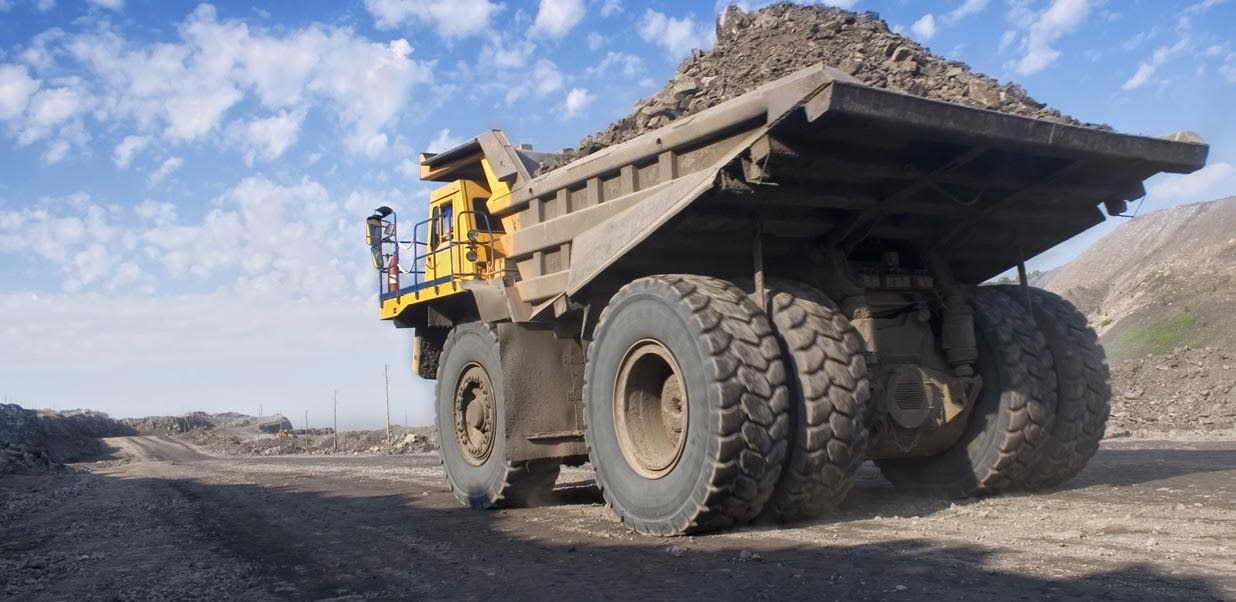Glencore reported a 16% drop in underlying cash profit (EBITDA) to $14.4bn ($14.6bn expected). Both the Marketing and Industrial segments saw declines, largely a result of lower thermal coal (energy) prices.
Free cash flow fell from $6.7bn to $4.6bn, driven by lower profits and higher capital expenditure. Net debt more than doubled to $11.2bn, largely due to the $7.0bn acquisition of EVR.
Copper equivalent production is expected to rise 9.2% in 2025 (up 4.6% in 2024), mainly driven by an increase in steelmaking coal. Based on current prices, Glencore’s guidance for 2025 underlying cash profit is $15.3bn.
The group announced a $0.10 per share dividend and $1.0bn buyback.
The shares fell 6.9% in early trading.
Our view
Despite being a global miner, Glencore’s performance continues to be weighed down by weakness in energy and coal markets. A dip was on the cards, but profit came in a little worse than expected which is why shares were down on the day. The buyback, though not guaranteed, offered a small reprieve.
Talk of moving its main listing away from the UK, maybe to the US, has grabbed headlines. The reality is, Glencore could probably attract a better valuation across the pond, but it doesn’t materially impact the investment case in our view.
Glencore has a large industrial portfolio producing metals and minerals. Industrial assets generated around three-quarters of the group’s cash profit last year. Over half comes from its coal portfolio but there’s also a big metals and minerals operation, including copper and nickel. These metals are essential for global efforts to reduce carbon emissions and copper is an area of focus for Glencore’s future growth and investment.
There's also a marketing business, which acts as a global commodity marketplace and continues to outperform its longer-term targets. Glencore earns a slice of profit capitalising on different prices for the same commodities in different locations or time periods. Performance relies more on volatility in the market than whether prices are high or low, which offers a nice degree of diversification.
It's important to flag now, the Marketing business is extremely complex with a lot of moving parts. Investors should be aware of the risk that brings.
Glencore is one of the few major miners to retain its thermal coal assets, and its acquisition of Elk Valley Resources (EVR) sparked discussions about a full separation of coal. EVR, a leading steelmaking coal business, is valuable but distinct from thermal coal. Shareholders want both types of coal to remain due to their high cash-generating potential, though an orderly reduction of the thermal coal business has been approved.
Another benefit of retaining coal is the net debt cap can be pushed back to its old level of $10bn. The EVR acquisition takes net debt back to that level, so there’s probably limited scope to make any further large-scale acquisitions, and investment will turn to expanding existing operations, with copper set to eat the lion’s share of the capex budget.
We think the outlook is encouraging for Glencore, with its large copper exposure and clear plan in place for the coal portfolio. But the mining sector is facing challenges from US trade wars and weaker global growth, and Glencore has little control over either.
Environmental, social and governance (ESG) risk
Mining companies tend to come with relatively high ESG risk. Emissions, effluences and waste, and community relations are key risk drivers in this sector. Carbon emissions, resource use, health and safety and bribery, and corruption are also contributors to ESG risk.
According to Sustainalytics, Glencore's management of material ESG issues is strong.
Glencore's already paid $1.1bn in fines relating to past governance issues, but anti-corruption policies have improved more recently. A new 2024-26 climate action plan was recently approved by 90% of shareholders, which includes plans for a phasing down of thermal coal operations. There’s also a 2050 net-zero carbon emissions target in place along with interim plans to reduce direct, indirect and supply chain emissions by 15% and 50% by 2026 and 2035.
Glencore key facts
All ratios are sourced from LSEG Datastream, based on previous day’s closing values. Please remember yields are variable and not a reliable indicator of future income. Keep in mind key figures shouldn’t be looked at on their own – it’s important to understand the big picture
This article is not advice or a recommendation to buy, sell or hold any investment.No view is given on the present or future value or price of any investment, and investors should form their own view on any proposed investment.This article has not been prepared in accordance with legal requirements designed to promote the independence of investment research and is considered a marketing communication.Non - independent research is not subject to FCA rules prohibiting dealing ahead of research, however HL has put controls in place(including dealing restrictions, physical and information barriers) to manage potential conflicts of interest presented by such dealing.Please see our full non - independent research disclosure for more information.


